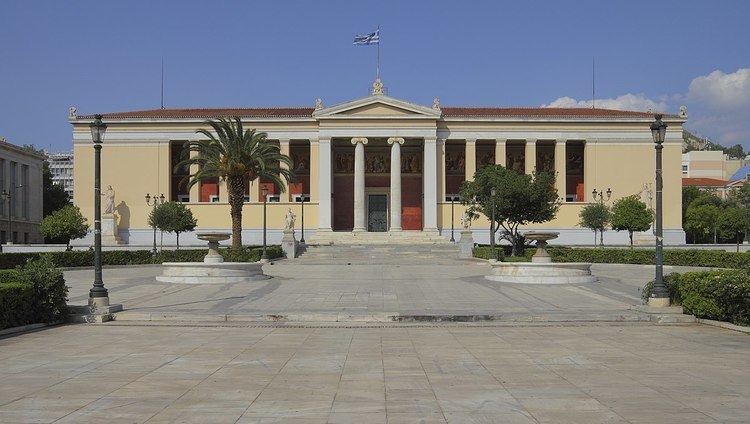Established 1973 Academic staff 548 Postgraduates 2,099 Phone +30 2831 077900 Undergraduates 14,688 | Rector Odysseas Zoras Administrative staff 420 Total enrollment 15,000 (2010) | |
 | ||
Notable alumni Lydia Kavraki, Stefanos Sidiropoulos, Nicolas Kokkalis Similar Foundation for Research, National and Kapodistr, University of Ioannina, University of the Aegean, University of Patras Profiles | ||
The University of Crete (UoC; Greek: Πανεπιστήμιο Κρήτης) is the principal higher education institution on the island of Crete, Greece, and one of the country's most academically acclaimed and reputable ones. The University ranked 51st in the The Times Higher Education (THE) annual list of the top 100 universities founded in the past 50 years.
Contents
- University of crete uoc rethymno crete
- Overview
- Emblem of University of Crete
- Faculties and departments
- Academic evaluation
- References
University of crete uoc rethymno crete
Overview
The University of Crete, is a multi-disciplinary, research-oriented institution, located in the cities of Rethymnon (official seat) and Heraklion, in the island of Crete. It is a University well known both nationally and internationally for its state of the art research, undergraduate curricula, and graduate programmes. It is considered one of the best universities in Greece mainly due to its research influence: it ranks in the top 400 Universities of the World by The Times Higher Education list, and also in the top 100 universities under 50 years by the QS World University Rankings. It is notable that it achieves this distinction although it has less than 30% of the faculty members in comparison to other larger academic institutions in Greece.
The University of Crete was established in 1973 and started functioning in the academic year 1977-78. As all Universities in Greece, it is a public university and as such it operates under the supervision of the State and all its educational activities, as well as a part of its research activities, rely upon government funding. The supreme administrative body of the University is the senate, which is presided over by the Rector of the University. The Head of the University is the Rector who is assisted by three Vice-Rectors in the exercise of his duties; all four together form the institution's high authority. They are elected for a period of four years by the teaching staff and representatives of the student body. The current rector is Prof. Odysseas Zoras.
As of 2014, there is a student population of approximately 12,000 active students enrolled at the university (10,000 at the undergraduate level and 2,000 at the postgraduate level), more than 540 Faculty members as well as approximately 420 administrative staff.
On several research topics the University of Crete collaborates closely with FO.R.T.H. The Natural History Museum of Crete, established in 1981 at Heraklion, is also part of the University of Crete.
Although still very young, the University of Crete has already shown its commitment in the evolving process of European integration, and it operates as an integral member of the European Research and Education Areas. It is currently coordinating and participating in European Union programs and activities such as ERASMUS, LINGUA, TEMPUS etc. and has important links and cooperations with other Mediterranean and Eastern European countries as well as with many American universities and colleges, through international Programs.
The student union also operates a radio station[7].
Emblem of University of Crete
The emblem of University of Crete is based on a Hellenistic coin found in Gortyn (430-300 B.B.) and depicts Europa in reflecting stance while sitting on olive tree branches. The emblem was designed in a medal by the sculptor Aspasia Papadoperaki.
Faculties and departments
The University of Crete is organized into Schools, which are composed of Departments with related disciplines. University of Crete has 2 campuses (Galos in Rethymnon, Voutes in Heraklion).
Academic evaluation
An external evaluation of all academic departments in Greek universities was conducted by the Hellenic Quality Assurance and Accreditation Agency (HQAA) in the years 2008-2014 and according to these results, the University of Crete, was characterized as a "Center of Excellence". The reports are publicly available.
